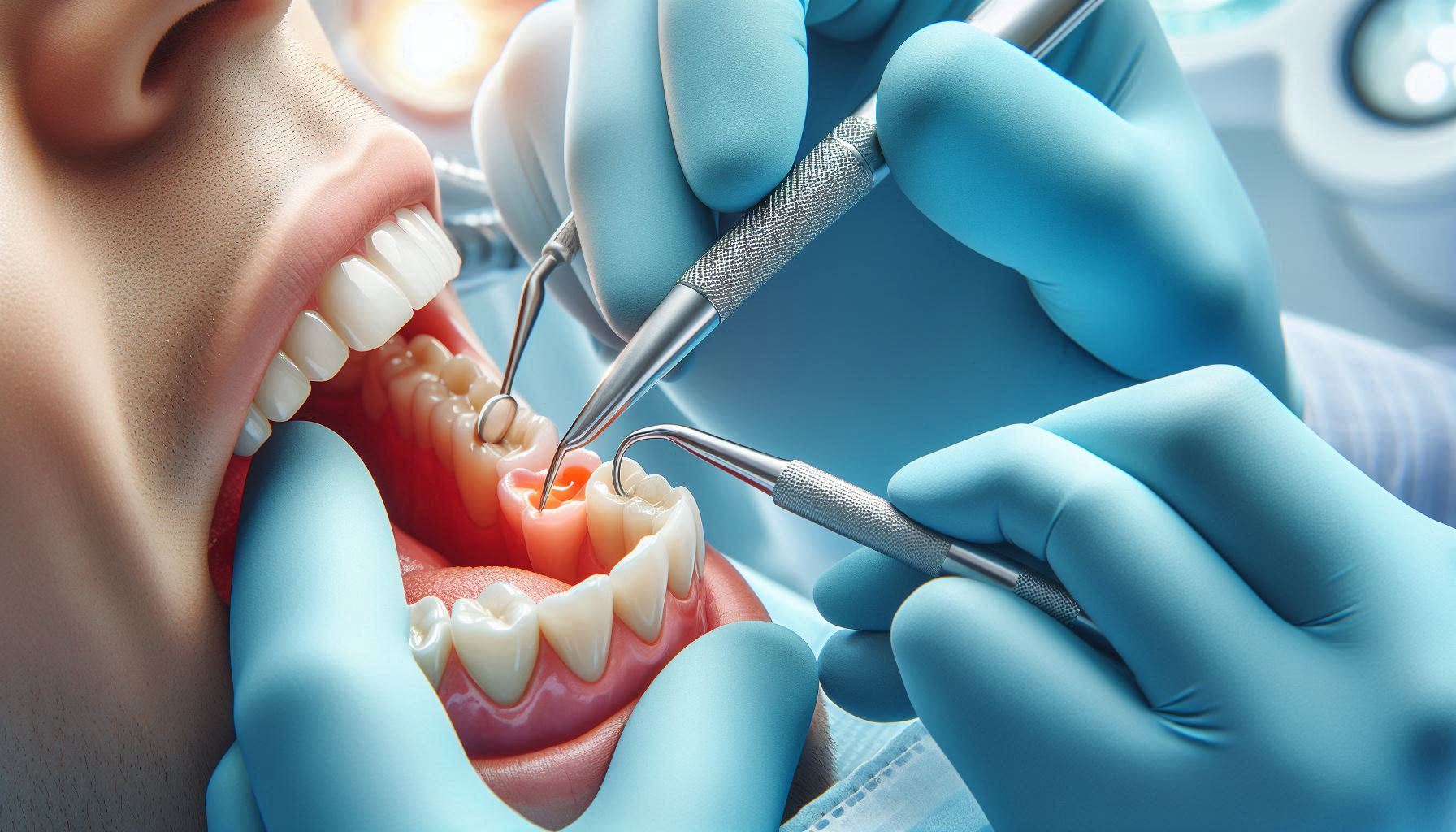Dental fillings are one of the most common dental procedures performed worldwide, offering an effective solution to repair cavities, decay, and damaged teeth. Whether caused by tooth decay, wear and tear, or an accidental injury, fillings restore both the function and appearance of your teeth. In this article, we’ll explore everything you need to know about dental fillings: what they are, why you need them, the different types available, the procedure involved, and how to care for your filled teeth.
What Are Dental Fillings?
A dental filling is a material used by dentists to fill cavities in teeth that have been damaged by decay. The filling restores the tooth’s structure and function, allowing you to bite and chew properly again. Fillings are also used to repair teeth that have cracks or are worn down from use.
The process of placing a dental filling is generally straightforward and can be completed in a single visit, making it one of the most accessible and common dental treatments.
Why Do You Need a Dental Filling?
A dental filling may be necessary for various reasons:
- To Treat Cavities (Tooth Decay): When a tooth decays, the enamel and underlying layers of the tooth break down, creating a cavity. Without treatment, the decay can spread, leading to more extensive damage or even tooth loss. Fillings stop the progression of decay and restore the tooth’s strength and appearance.
- To Repair Cracked or Chipped Teeth: Accidents or chewing hard substances can lead to cracks or chips in your teeth. Dental fillings can restore the tooth’s structure and prevent further damage.
- To Fix Worn-Down Teeth: Repeated grinding (bruxism), aging, or improper dental hygiene can wear down a tooth’s surface. Fillings restore the tooth’s functionality and prevent further deterioration.
- To Improve Appearance: If your tooth has a visible flaw, such as a hole or a noticeable chip, fillings can be used to improve its appearance.
Types of Dental Fillings
There are several types of materials used for dental fillings, each with its benefits and considerations:
1. Amalgam Fillings (Silver Fillings)
- Composition: Made from a mixture of metals, including silver, mercury, tin, and copper.
- Pros: Highly durable and cost-effective. Amalgam fillings are ideal for larger cavities and can last 10-15 years or more.
- Cons: The metallic color is visible, so they are often used for back teeth where aesthetics are less of a concern.
- Best For: Large cavities, especially in the back teeth.
2. Composite Fillings (Tooth-Colored Fillings)
- Composition: Made from a mixture of acrylic resins and glass particles, which can be easily shaped to match the contours of the tooth.
- Pros: The color can be closely matched to the natural color of the teeth, providing a more aesthetically pleasing result.
- Cons: May not be as durable as amalgam, especially in larger fillings. Composite fillings can wear down more quickly and may need to be replaced after 5-7 years.
- Best For: Front teeth or small cavities where aesthetics are important.
3. Ceramic Fillings (Porcelain Fillings)
- Composition: Made from porcelain, these fillings are durable and highly aesthetic.
- Pros: Ceramic fillings are stain-resistant and can closely resemble the natural appearance of teeth. They are also highly durable and long-lasting.
- Cons: They tend to be more expensive than other filling types and may require multiple visits for placement.
- Best For: Visible teeth, particularly those in the front of the mouth, and large cavities.
4. Resin Ionomer Fillings
- Composition: Made from a mixture of glass and acrylic acids, these fillings release fluoride, which can help protect the tooth from further decay.
- Pros: They are easy to apply and bond well to the tooth, making them useful for fillings in areas where aesthetics are less of a concern.
- Cons: Not as durable or long-lasting as other filling types, and may wear down over time.
- Best For: Children’s teeth and areas that are less prone to heavy chewing stress.
5. Glass Ionomer Fillings
- Composition: A mix of acrylic and glass, these fillings release fluoride and help prevent further decay.
- Pros: They are biocompatible, which means they are well-tolerated by the body and provide a good option for people with allergies or sensitivities.
- Cons: Not as durable as amalgam or porcelain, and may not be suitable for large cavities or areas that endure heavy pressure from chewing.
- Best For: Fillings in areas not subject to heavy wear, such as cavities in baby teeth.
The Dental Filling Procedure
Getting a dental filling is generally a quick and simple process. Here’s what you can expect during the procedure:
- Initial Consultation and Diagnosis: Your dentist will examine your teeth and may take X-rays to determine the extent of the decay or damage. If a filling is necessary, they will discuss the best filling material for your needs.
- Preparation of the Tooth: After numbing the area with a local anesthetic, the dentist will clean out the decayed or damaged portion of the tooth using special dental tools. This step ensures that all harmful bacteria and decay are removed before the filling is placed.
- Placement of the Filling: Once the tooth is prepared, the dentist will apply the filling material. For composite fillings, the material is layered and hardened with a special light, while amalgam fillings are placed in a single session. After the material is applied, the dentist will shape it to fit the natural contours of your tooth.
- Finishing Touches: Once the filling is in place, your dentist will check your bite to ensure the filling does not interfere with your ability to chew. If necessary, they will adjust the filling until it fits comfortably.
- Aftercare: After the filling procedure, your dentist may advise you to avoid certain foods and beverages for a short period to ensure the filling sets properly. Over-the-counter pain relievers may be recommended if you experience any discomfort.
Caring for Your Dental Fillings
Proper care after receiving a dental filling can help prolong its life and keep your teeth healthy. Here are some tips for maintaining your fillings:
- Brush and Floss Regularly: Continue to brush twice a day and floss daily to prevent plaque buildup around the filling and ensure the health of the surrounding tooth.
- Avoid Hard or Sticky Foods: Foods like hard candies, ice, or sticky gum can damage or dislodge the filling, especially if it’s large or made of composite material.
- Visit Your Dentist Regularly: Regular checkups will help ensure your fillings are in good condition and allow your dentist to spot any potential issues early.
Signs That You May Need a New Filling
Over time, fillings can wear down or become damaged. Here are some signs that it may be time to replace a filling:
- Tooth Sensitivity: Increased sensitivity to hot or cold foods and beverages may indicate that the filling has worn down.
- Visible Cracks or Chips: A damaged filling may be noticeable, or you may feel rough edges on your tooth.
- Pain When Biting: If you experience pain when chewing or biting down, your filling may have become loose or shifted.
- Visible Gaps: Gaps around the filling can allow bacteria to enter, leading to further decay or discomfort.
Conclusion
Dental fillings are a straightforward and effective way to restore the health and appearance of your teeth. Whether you have a cavity, a cracked tooth, or general wear, fillings provide a solution that lets you continue to smile with confidence. The right filling choice, combined with proper dental care, ensures that your teeth stay strong and healthy for years to come.
If you suspect you need a filling or are experiencing tooth pain, don’t wait—consult your dentist to restore the health of your teeth and maintain a beautiful, functional smile. Your dental health is an essential part of your overall well-being, and filling cavities early can prevent more complex issues in the future.




